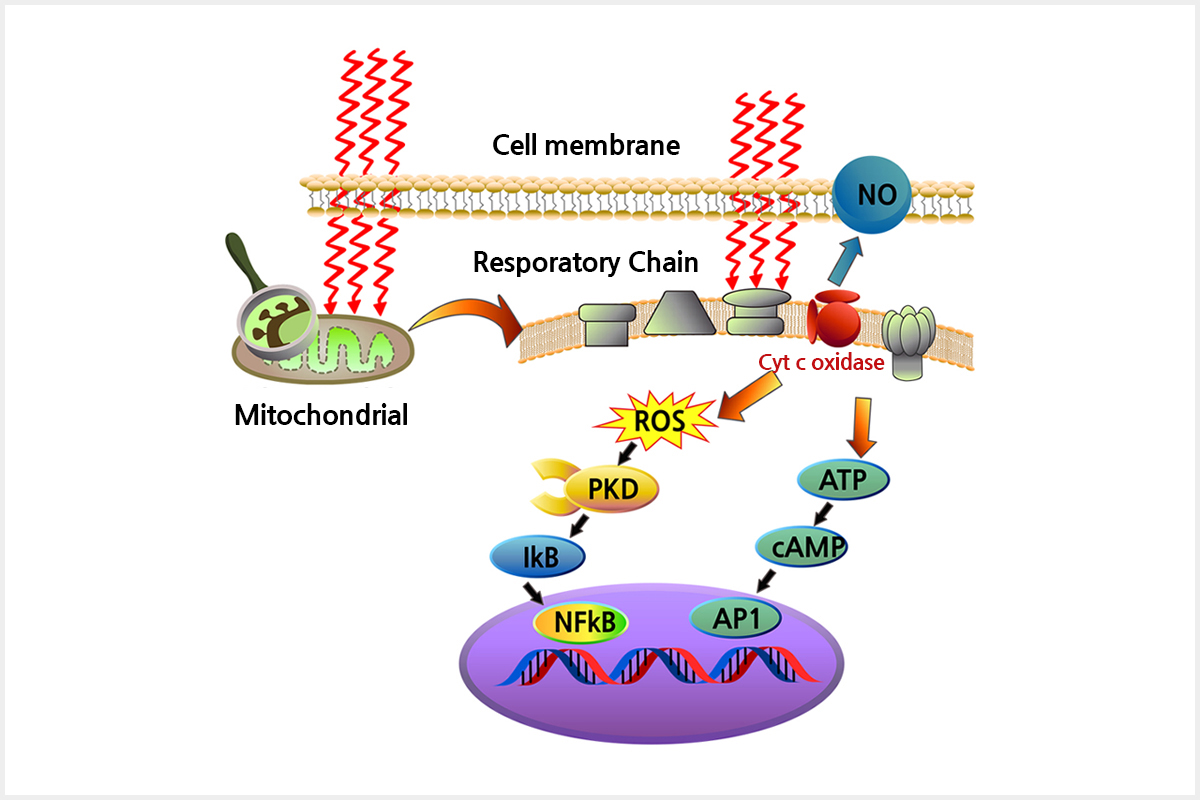Not known Details About Photobiomodulation
Wiki Article
More About Photobiomodulation
Table of ContentsEverything about PhotobiomodulationSome Ideas on Photobiomodulation You Need To Know10 Easy Facts About Photobiomodulation ShownWhat Does Photobiomodulation Mean?
Laser treatment is a medical treatment that makes use of focused light to promote a procedure called. During PBM, photons get in the tissue and engage with the cytochrome c complicated within mitochondria. This communication causes an organic cascade of occasions that causes an increase in cellular metabolic process, which can as well as accelerate the healing process.There is consensus that the application of a restorative dose of light to damaged or dysfunctional cells results in a cellular action moderated by mitochondrial devices. Photobiomodulation. Researches have shown that these modifications can influence pain and inflammation, along with, tissue fixing
Changes in ATP, reactive oxygen varieties and nitric oxide adhere to light absorption by Cc, O. These impacts are redox state and dosage dependent. In hypoxic or otherwise stressed cells it has been shown sometimes that adhering to, nitric oxide is launched, ATP is enhanced and oxidative stress is minimized [27-31]

Getting My Photobiomodulation To Work
PBM tools have actually been cleared for advertising by FDA with the Premarket Notification/510( k) procedure as adjunctive tools for the momentary alleviation of pain. These clearances were based on the discussion of clinical information to sustain such claims (Photobiomodulation). In this treatment, a light source is positioned near or in contact with the skin, permitting the light power (photons) to permeate tissue where it engages with chromophores found in cells leading to photophysical and photochemical changes that lead to alterations at the molecular, cellular and cells levels of the bodyInterestingly, current research shows that light can improve efficiency in normal tissues and cells. The possible applications of PBMT are various and are being explored experimentally at the standard science, pre-clinical and medical level. The present clinical usages are for the alleviation of discomfort and inflammation and the therapy of sporting activities injuries.

The treatment parameters and number of sessions needed for PBMT are dependent upon location and cause. PBMT typically calls for even more than one therapy for optimum pain alleviation.
Not known Facts About Photobiomodulation
Therapy specifications for PBMT were originally developed using cells in vitro and in tiny animal designs. These treatment parameters typically had a low irradiance and fluence and worked well for cutaneous applications. Nonetheless when clinicians started to make use of PBMT to treat frameworks that lay much deeper in the body, they made use of these specifications with negative outcomes.
We currently recognize that these unfavorable research studies was because of inaccurate gadget and therapy specifications for transcutaneous therapy of much deeper frameworks. Current developments in laser treatment devices and more study into the appropriate dosages have actually significantly boosted the outcomes of PBMT. For dealing with deep cells, the wavelength of light used determines the depth of penetration right into a tissue.
It is important that a medical professional utilizes the Continued suitable wavelength of light and specifications to deal with a condition. One wavelength and one collection of treatment parameters will not work for all conditions. Adverse side effects have not been reported from using PBMT (Photobiomodulation). Updated June 27, 2016Juanita j
Light therapy is a non-invasive treatment that works by raising the get redirected here capability of the cell to develop power (ATP) to recover the location being dealt with. Because of this, it can reduce swelling, swelling, and discomfort in the location. Research study around is broadening, with more extensive study papers connected listed below for those that want to discover more.
Photobiomodulation Fundamentals Explained
In the very first experiment, Dr. Endre Mester, used cut rats and observing how the laser impacted their capacity to grow hair contrasted to the team that was not receiving LLLT. He discovered that the team of mice getting LLLT had the ability to grow their hair back a lot more swiftly than the group of mice that really did not receive LLLT (Hoon C, et alia; 2012).This treatment is described by doing this to separate the difference in between the lasers some occupations make use of to cut (eg. in surgical procedures, or dental treatments). Low-level light treatment is pain-free, non-invasive treatment. It is made use of to lower inflammation, swelling, and chronic joint conditions, decrease discomfort and increase injury healing of nerves and cells (Hoon C, et al; 2012).
LLLT has a biphasic action, suggesting that lower dosages are generally seen to be extra useful than higher dosages. That being stated, doses higher or less than the optimal dosage doesn't affect (Hoon C, et alia; 2012). Because of this, it can be hard to have researches on LLLT with blog here numerous parameters.
Some companies combined both (LED and laser) to give an extra well-shaped treatment because lasers can pass through deeper than LED and infrared light (Norman Doidge, The Mind's Method of Healing, 2015). During treatment, the location that is being treated is exposed to LED light from a Biography, Flex Laser, which is at 660 nm wavelength, complied with by infrared light at 830-840 nm wavelength.
Report this wiki page